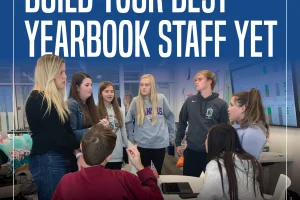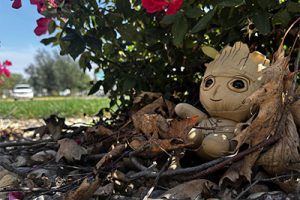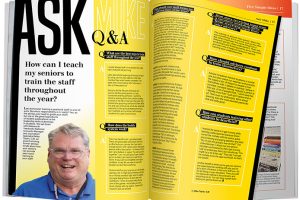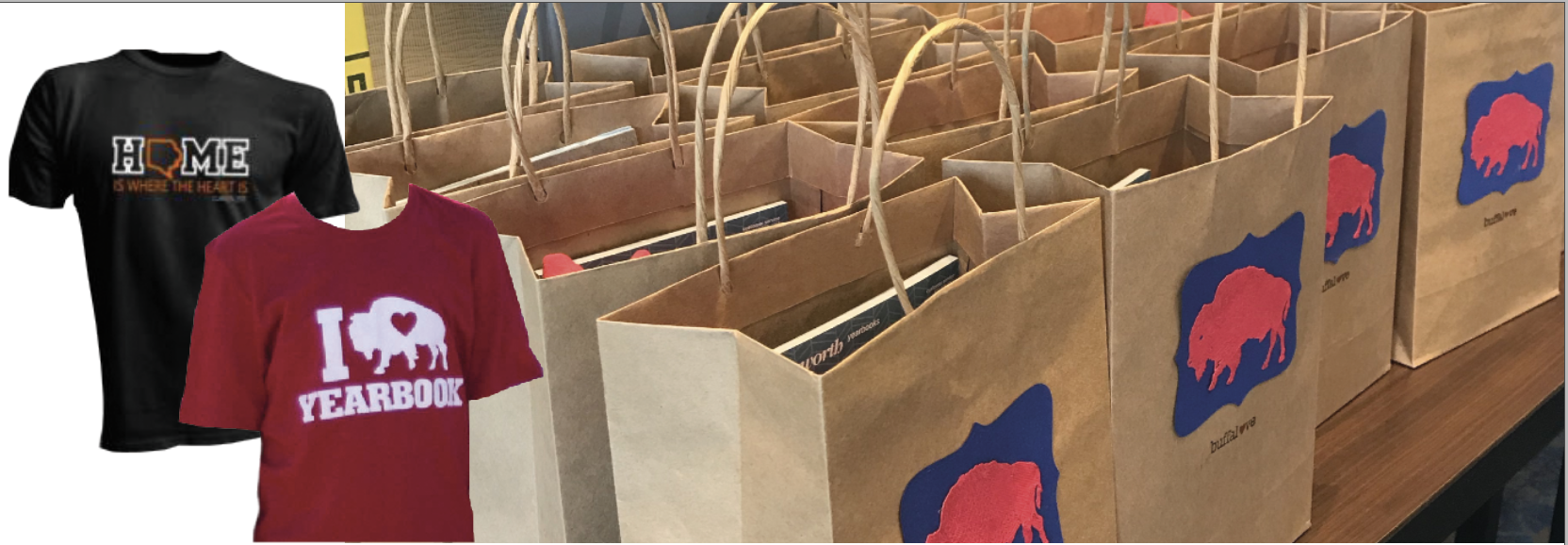
Culture Shift: Adjusting to Changes in the Classroom
Everyone hopes for a year of smooth sailing, with an exceptional staff and an appreciative community. That rarely matches reality. Sometimes a curveball changes the program. It could be planned or hit you out of nowhere. Advisers who faced drastic culture shifts in their classroom offered sound advice.
Understand your audience
Not my yearbook
After 11 years, Jai Tanner had “a beautiful running machine” of a yearbook in El Paso, Texas. She figured she could apply the same principles that made her successful in Texas to the Yelm High School yearbook in Yelm, Washington, when she moved. She quickly realized Washington has its own way.
“They are extremely devoted to their school colors and their mascot,” Tanner said.
In Texas, school colors were not a priority. She wasn’t prepared for the significance placed on colors as a part of school identity. When her editor wanted to go a less traditional route, it did not go over that well.
“It was a beautiful book. We got lots of compliments on it, but kids were like, ‘This isn’t a Yelm book. This isn’t about us.’ Even though it was, but it wasn’t red and black.”
Rather than get defensive or try to change the school, Tanner recognized an important concept.
“You have to understand what your population wants,” Tanner said. “Our 2018 theme was RED, so that was an extremely popular book. I really believe we could have sold 150 more copies. We sold out in 45 minutes. That was the ticket to help me understand they want a book that reflects their colors, their mascot, their school. It’s my job to help elevate that.”
The Write Way
Erin DeVantier and Kaitlin Curcio faced challenges when DeVantier decided to introduce more writing to the yearbook at Williamsville North High School in Williamsville, New York.
“We didn’t have any writing,” DeVantier said. “We just threw as many pictures in as possible and called it a day.”
That’s when she recruited Curcio, the new English teacher, to aid in the journalistic side. Their approach was not immediately well-received, with parents telling her the book was ruined.
“We took a lot of heat for making a change. I probably got 50 emails saying, ‘What is all this writing in the book? Kids don’t want to see writing. They want to see pictures, pictures, pictures,’” DeVantier said. “That’s the thing they had always just been used to.”
They stayed focused on what they thought was valuable: captioning photos and including stories.
The End Is Only the Beginning
The building for Davie County High School in Mocksville, North Carolina, no longer met the school’s needs. Michelle Shue knew the community understood, but letting go made unique challenges creating the last yearbook of the old building – the bookend of their school experience, as she refers to it.
“Logically, you know a new school in a new location is going to provide wonderful opportunities, but it’s the nostalgia of shared experience they were mourning,” Shue said. “It was a true loss.”
Former students mourned that future generations would never walk the same halls their family had.
Like Tanner, Shue found the right theme was crucial. An editor suggested “Home is Where the Heart Is.”
“That was it. I mean, it was simple,” Shue said. “It just immediately spoke to the emotion of everybody sitting there. And it’s relatable. We were already down that path as soon as she said that.”
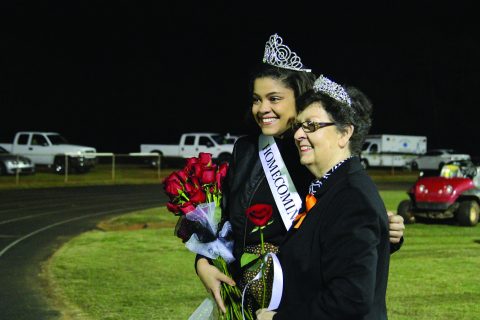
Lessons learned
Get someone else in your corner
DeVantier and Curcio confess the negative feedback got to them more than they admitted.
“We cried,” DeVantier said laughing. “Secretly, we cried.”
Support from their principal made a huge difference. He handled most parent responses, taking a huge burden off them, and encouraged them to keep going.
“He put it into perspective that we had 50 people who complained, but our book went out to about a thousand people who probably have one or two parents looking at it,” DeVantier said. “Two, three thousand people who saw the book didn’t complain.”
“One big thing is to involve other adults in the building to make sure you have people on your side and ready to support your students,” Curcio said.
The support also came from unexpected places.
“A lot of teachers at our school … reached out to our kids. When they heard negative feedback, they would talk to our kids and say, ‘You did an amazing job! I’m so proud of you for all the hard work you put in. This is a quality book!’ They really stood up for our kids and acknowledged the work our kids put in.”
Diversity matters
Farhana Hoque wanted her book to reflect the diversity of Midwood High School, in Brooklyn, New York.
“I always call my classroom a mini United Nations,” Hoque said. “[Students] can turn left and right and there’s easily 10 countries represented in that room.”
She did not always find that reflected in their yearbook. She made a goal of inclusivity, even if that meant working harder for their content.
“They created a Snapchat feature spread … I noticed all the snaps were all selfies of girls. I said, ‘Where are all the boys? We really need to diversify that and get some of our male Snapchat users.’ They were like, ‘Boys don’t use Snapchat,’ and I said, ‘Sure, they do. You just have to really ask and dig around.’”
Key decisions made the yearbook more inclusive. Hoque made a point to include cultural events in the yearbook. It’s a great photo opportunity and might include students not involved in other activities.
“We have a Culture Day in the school which we really love incorporating into the yearbook. The kids get to dress up in their cultural attire,” Hoque said. “Their faces light up talking about their countries or the places their parents or ancestors come from.”
Next, she focused on creating an environment where her staff reached outside their social circles.
“I like to do a lot of icebreakers, ones where they’re not always sitting with the same people they’ve been talking to,” Hoque said. “I’ll say, ‘Today you’re going to interview two or three more people you have not met or talked to.’ This way, they’re not just stuck to the same clique.”
Technology plays a large role. The staff posts on social media for pictures, and broadening the pool of resources increases their diversity.
Infecting your staff with the yearbook bug
Beyond the external sources, getting the staff on board was vital. Camp was a common way to accomplish this. Shue credits camp with preparing a young, inexperienced staff and now goes every year.
“We got a month and a half’s worth of work done in just those first four days,” Shue said. “We walked away from camp with presentation boards looking exactly like our book looked.”
DeVantier and Curcio agree that camp is a game changer and helped get their students on board. They recall being shocked at their first Camp Orlando by how big yearbook is in Texas and Florida. When they took over, it was just a club with two or three students.
“We took them to Camp Orlando, and they just were wowed by the energy of all these yearbook kids,” DeVantier said. “They really loved it and brought it back to our school, and our staff is now 55 kids.”
Another important consideration? Have the right editors in place. That may mean diversifying your staff in terms of representation, adding new editors to reflect new interests or recruiting outside talent.
“When I’m accepting students in the yearbook class, I know that I want culturally conscious students, and also students of male and female genders,” Hoque said.
Hoque prides herself on greater male representation on staff after starting with only one to two. She recruited males who hung out in the yearbook office, then asked them to bring their friends to the office. She jokes that she begged, but eight guys joined.
Curcio and DeVantier found portions of their student body underrepresented. They had a large sports section, but parents commented they have as many kids in music without the same coverage devoted.
“When we saw that music made up such a huge academic portion and how it borders between what’s academic and what’s extracurricular, we added a few people to our staff,” Curcio said. “That really helped because I think we have over a thousand kids involved in some sort of music.”
With a young staff on her hands, Shue searched for editors outside of her yearbook pool.
“I recruited them from my A.P. Language class because I knew that they were smart enough and had enough skills in writing and in creativity that they would be able to step into some leadership positions, learn very quickly and then be able to teach others how to do it,” Shue said. “While they’re inexperienced in yearbook, they brought a lot in their experience to the job that they’re doing.”
Shue lets her staff focus on their interests to develop skills.
“I think that helped, especially having new kids,” Shue said. “We move them around if they feel like, ‘Nah, that’s not for me. Let me try photography.’ They have that freedom to move, but really honing in on developing one skill I think has allowed kids to come in and feel like, ‘OK, I can maybe try yearbook.’”
Make kids and community part of the change
DeVantier and Curcio knew for students to embrace the change, they had to be in the book.
“We really tried to reach out to include more people,” DeVantier said. “We, for the first time, tracked the tagging to make sure that each kid is in the book. Around three times was our goal.”
DeVantier and Curcio rebranded a popular sports local slogan for their theme, selling clothing and creating posters. Shue’s staff sold over 500 T-shirts, and not just to students. Seeing the shirts in the community heightened awareness of their book while recognizing the nostalgia of the original building.
“It was amazing! We sold some to students, but the bulk went out to the community.”
The staff captured the school’s legacy through old yearbook photos. A photo of their first Davie County homecoming queen sparked a photo idea.
“The original queen lost her crown over the years, so the [staff] bought her a crown,” Shue said. “The first queen crowned the last queen at that location.”
Shue’s staff pointed to their history of change, from changing their mascot to racially integrating before it was legally required, something Shue reminded them was rather forward-thinking for that time. The nods to history was a decision that paid off.
“We even had an elderly man from the local nursing home call me and say, ‘I hear that your yearbook has a bunch of old pictures in it. Could we get a copy here?’ It was so wholeheartedly embraced.”
So what can you do?
Give it time and don’t compare
Tanner found it’s easy to compare, even unintentionally, and that adjusting takes time.
“I’m still adjusting, still trying to find answers. There’s a phrase that says, ‘Every stage of your life is going to require a different you.’ I go back to that phrase because if I am going into this thinking I’m going to do what I did in Texas, I’m going to really struggle,” Tanner said. “Just be in the moment with your kids.”
Curcio found, given time, the student body came around.
“When we made our ‘One North’ book that won the CSPA Crown, we actually got no negative feedback from it, but it still had all those journalistic qualities that our first book did. So we are in the belief that our student body has grown to appreciate it because I only heard positive feedback,” Curcio said.
Recognize external factors
Human nature wants to be in control, but it’s not possible. The ladder Shue and her staff put together was completely rearranged due to weather. Homecoming split into three separate weeks because North Carolina experienced two major hurricanes and heavy rain cancelled games so spring sports were reduced to single pages.
“Anticipate that these beautiful plans are going to look like a hot mess of good intentions by the end of it all, because it truly is a book about a year,” Shue said.
Tanner accepted some changes were out of her control. Living in a military community meant it would be more transient, making it harder to establish a program and find editors. She also learned some changes were within her control.
“Understand your physical environment and how that changes you,” Tanner said, reflecting on how less sun in Washington affected her mood, so she tries to go outside more. “You can even notice within a class period, if the sun comes out, especially if we go out to shoot [photos], wow! That mood changes.”
Enjoy the journey
For most, the rewards of yearbook, such as the student relationships formed, outweigh the stress.
“Our staff is just so fun to be around,” Curcio said. “We do lock-ins and we have our regular meetings, but we do have parties after school. We eat dinner with them a lot at school when we have a long night of yearbook work. All the fun times really outweigh the time commitment or anything that is difficult that comes our way.”
Even though Hoque had no yearbook experience, she is happy the yearbook program fell into her lap.
“I’m really glad it did because it’s my favorite class of the day. I just love the students. I love all the ideas they come up with,” Hoque said. “It’s been quite a journey and I don’t regret it.”

